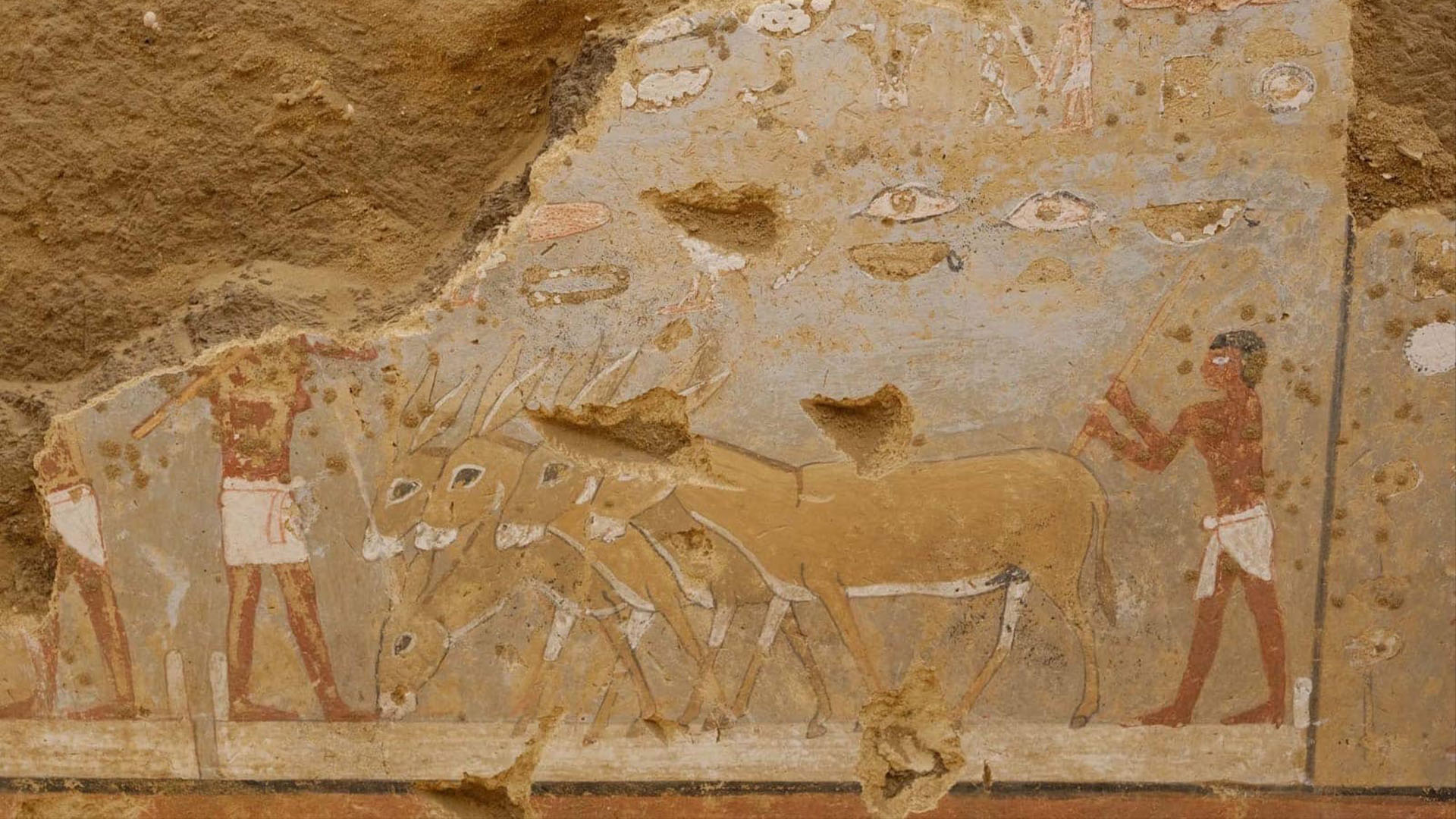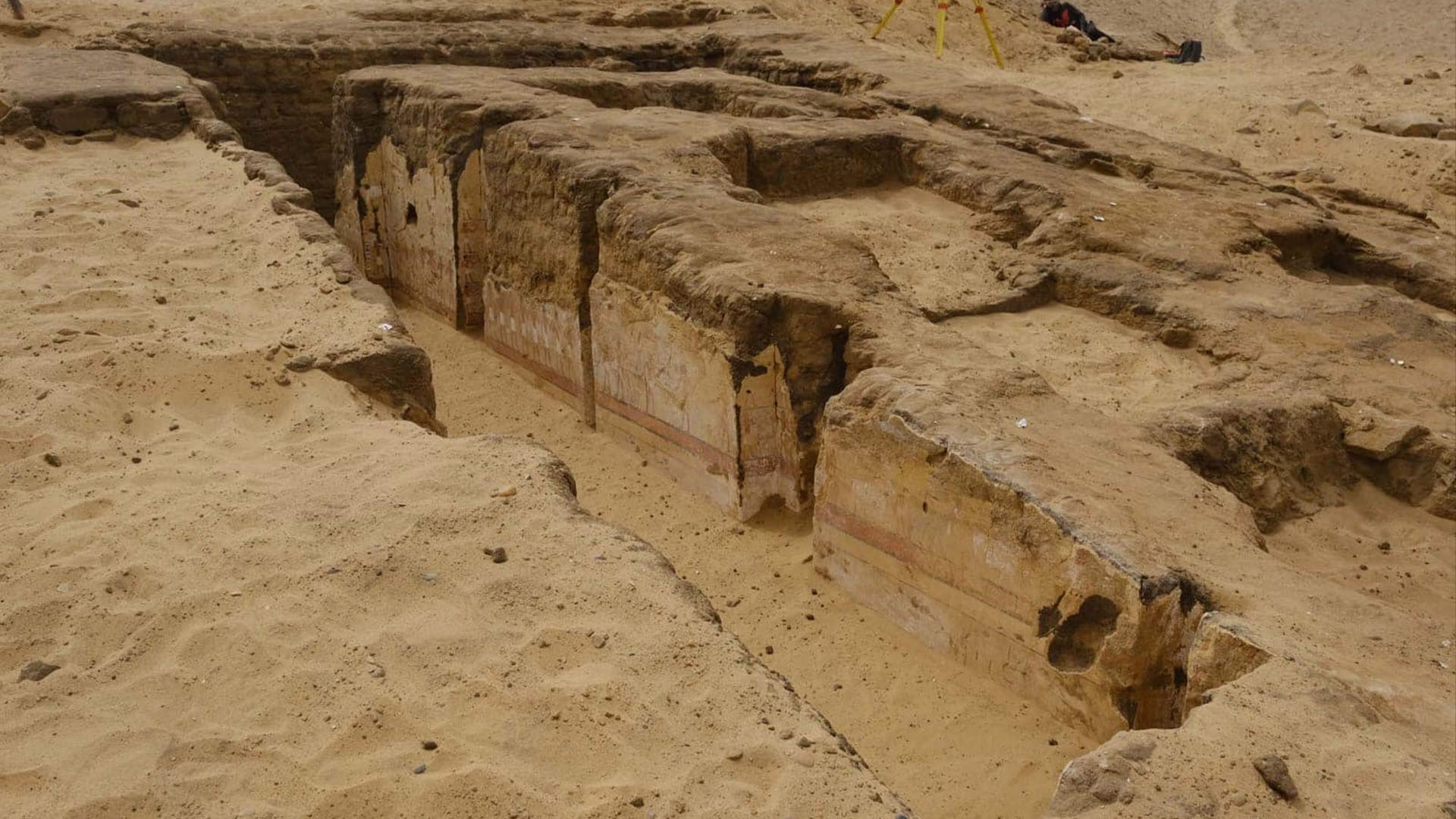4,300-year-old Egyptian tomb with stunning wall paintings was burial place of priestess and royal official
The ancient Egyptian tomb has colorful wall paintings depicting what life was like 4,300 years ago.

Archaeologists in Egypt have discovered a 4,300-year-old tomb with remarkable wall paintings illustrating everyday life. The tomb is located at Dahshur, a site with royal pyramids and a vast necropolis that's about 20 miles (33 kilometers) south of Cairo. When the team returns to the field, they plan to excavate the burial shafts to see if any mummies remain.
The mud-brick tomb is known as a mastaba, a rectangular structure with a flat roof and sloping sides. Inside, the team found wall paintings depicting scenes of life in ancient Egypt, such as donkeys threshing grain by trampling over it, ships sailing the Nile river, and goods being sold at a market, the Egyptian Ministry of Tourism and Antiquities said in a statement.
Hieroglyphic inscriptions found on the tomb's walls say the burial belongs to a man named Seneb-Neb-Af and his wife Idet. The inscriptions state that Idet was a priestess of Hathor — a sky goddess associated with sensuality, maternity and music — while Seneb-Neb-Af held several positions in the royal palace that involved dealing with the administration of tenants.
Related: Archaeologists find top half of giant Ramesses II statue, completing a century-long puzzle
It's hard to know exactly what duties Seneb-Neb-Af had, Stephan Seidlmayer, an archaeologist with the German Archaeological Institute who is leading excavations at the site, told Live Science. A nearby town was controlled by the palace, and he may have decided who got to live there and been in charge of administering funds for the community, Seidlmayer said in an email.
The date of the site was determined based on the style and content of the inscriptions, the design of the mastaba and the style of the pottery, Seidlmayer said. He noted that the couple probably lived in the late fifth dynasty or early sixth dynasty, around 4,300 years ago. At this time, pyramids were still being constructed in Egypt, but they were smaller than those that had been built in the fourth dynasty at places like Giza.
The excavation of the tomb is not done, and more finds will likely be made. The "burial shafts of this tomb could not yet be excavated, therefore there are not yet any [unearthed] human remains," Seidlmayer said. "We hope to excavate the shafts in the coming season — and then, of course, the human remains will be of key interest."
Get the world’s most fascinating discoveries delivered straight to your inbox.
Other recent finds at Dahshur include blocks from a small pyramid and a burial chamber that may belong to a princess.

Owen Jarus is a regular contributor to Live Science who writes about archaeology and humans' past. He has also written for The Independent (UK), The Canadian Press (CP) and The Associated Press (AP), among others. Owen has a bachelor of arts degree from the University of Toronto and a journalism degree from Ryerson University.
 Live Science Plus
Live Science Plus






